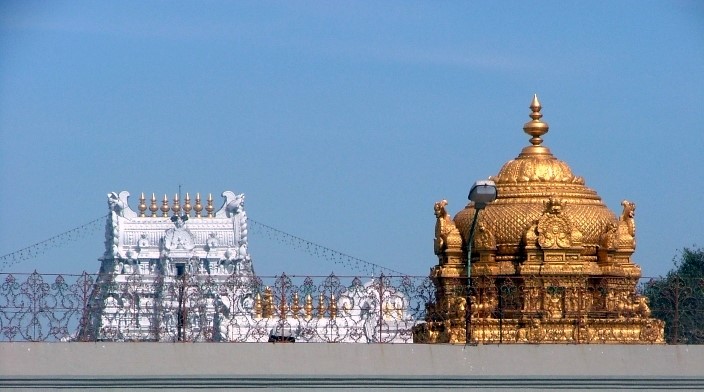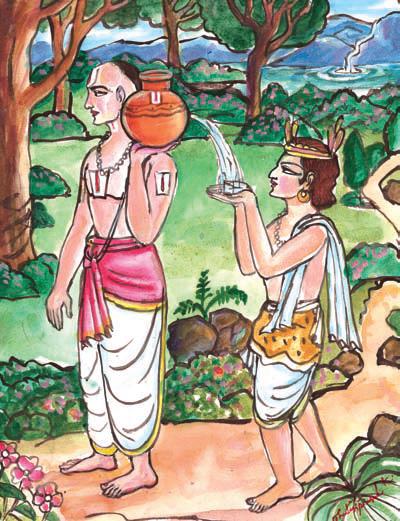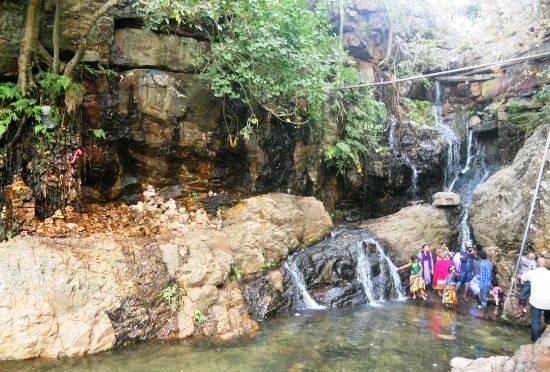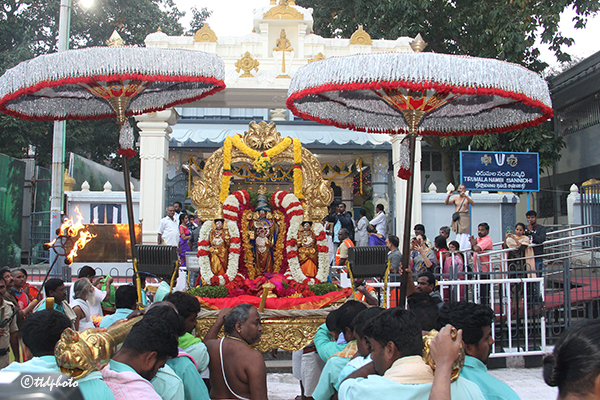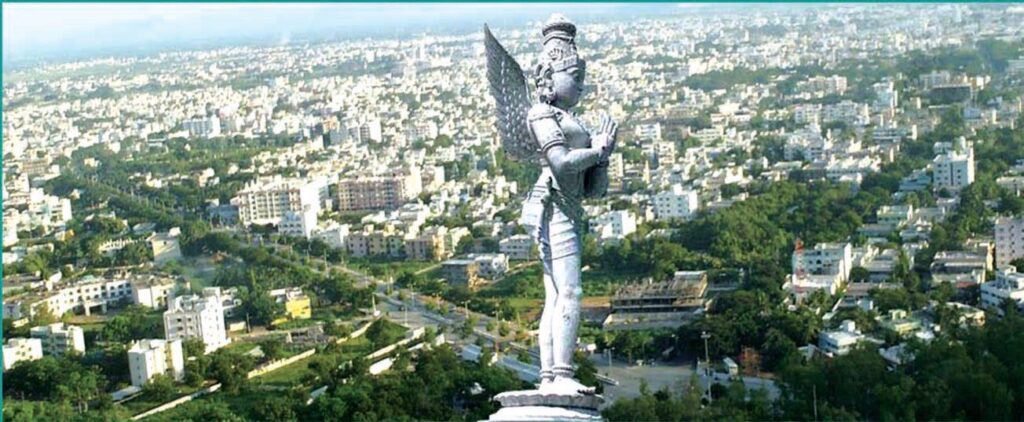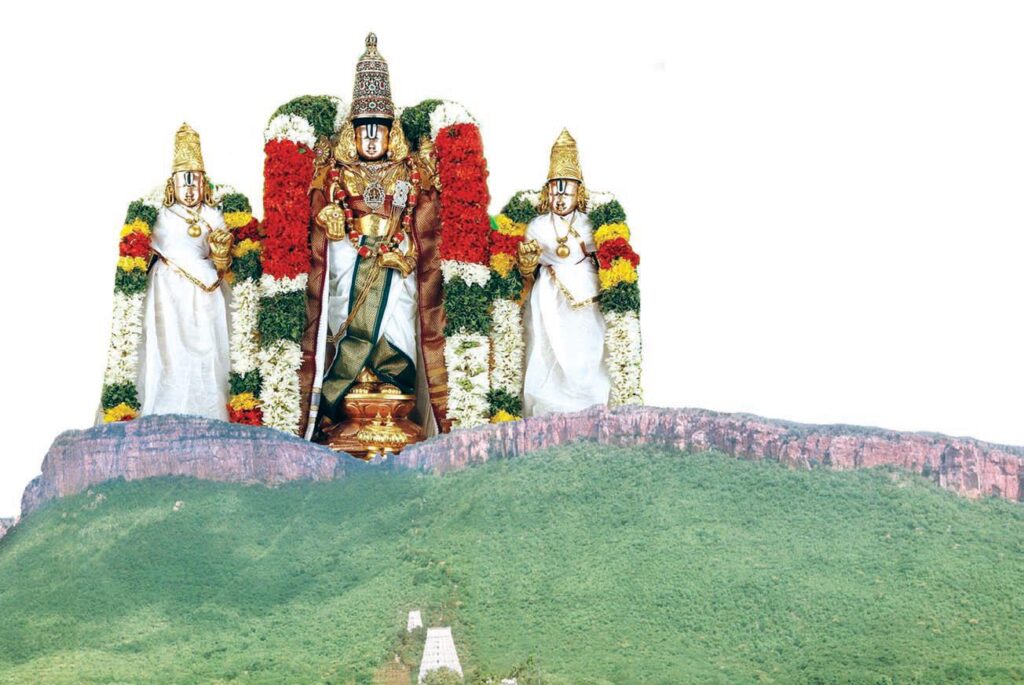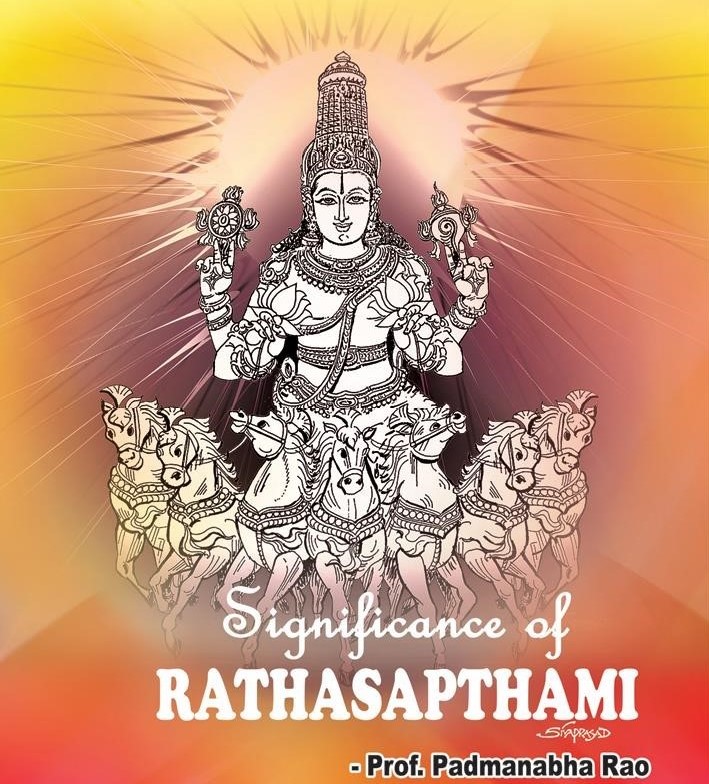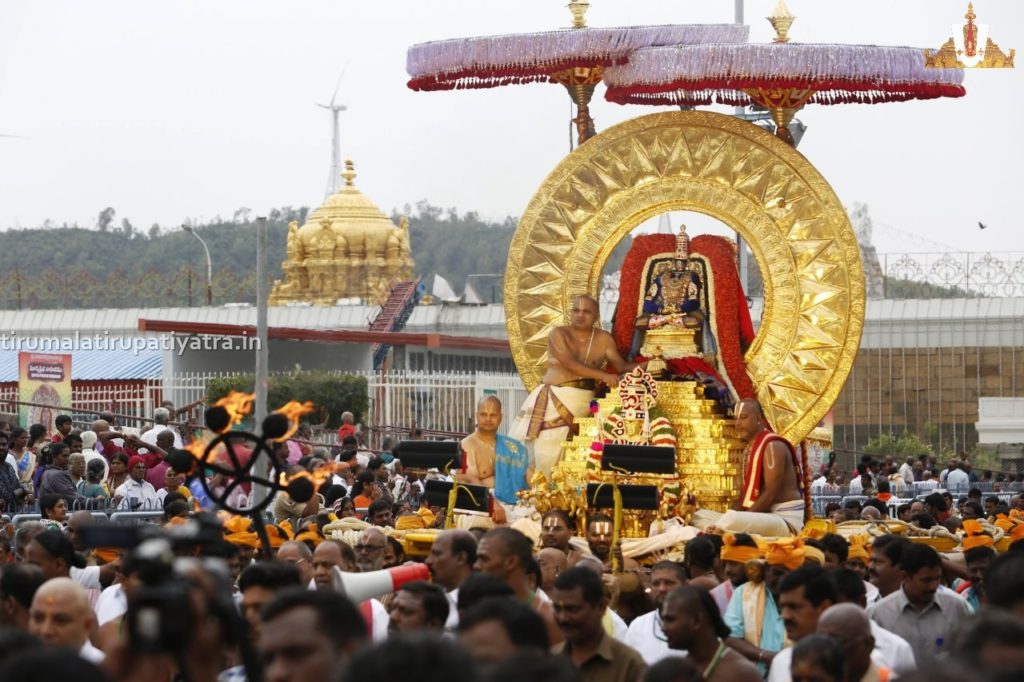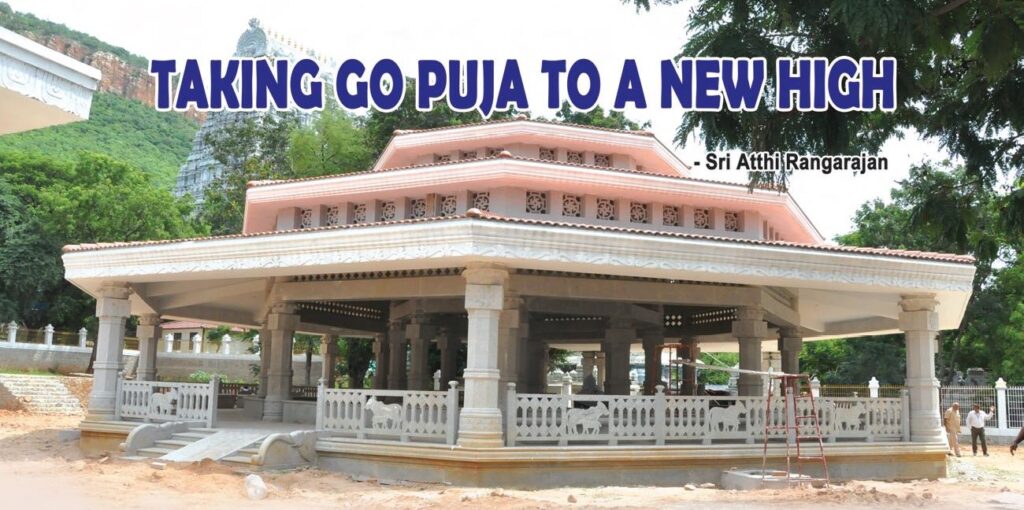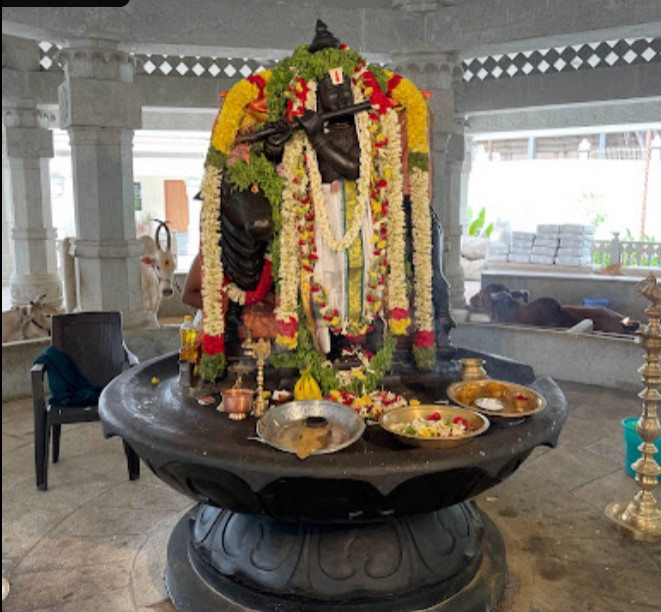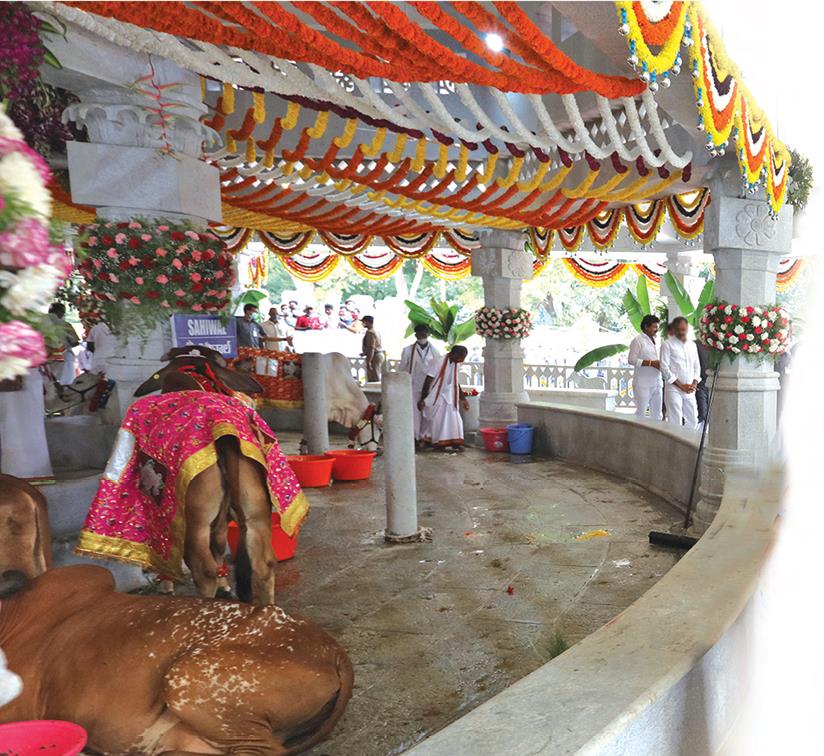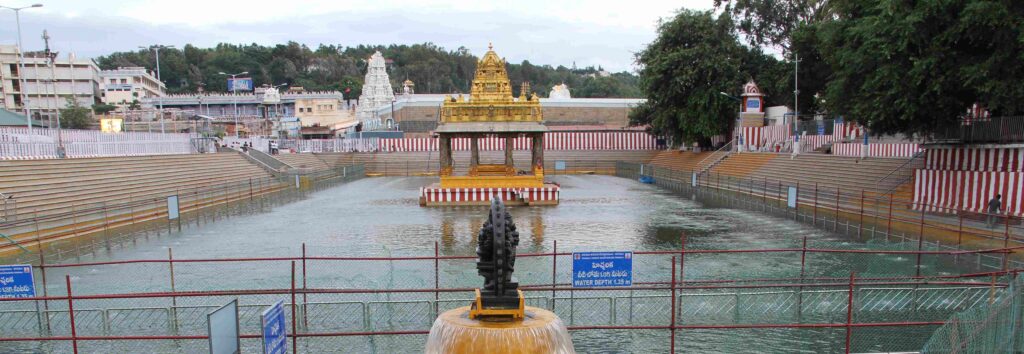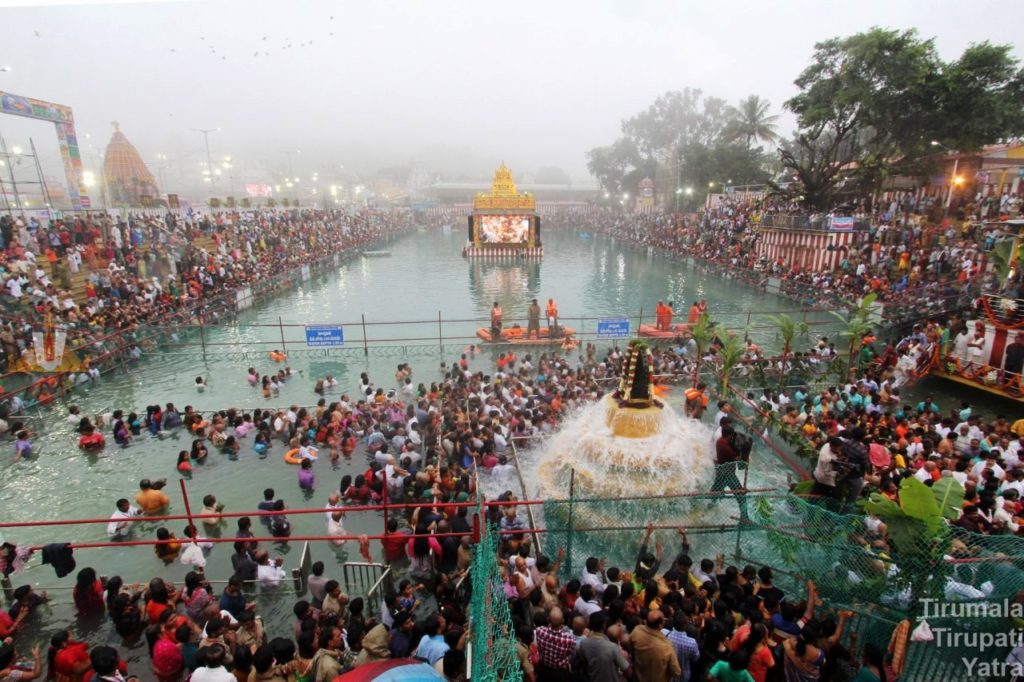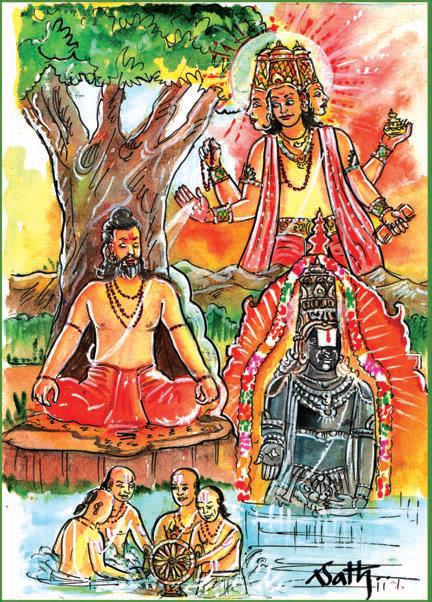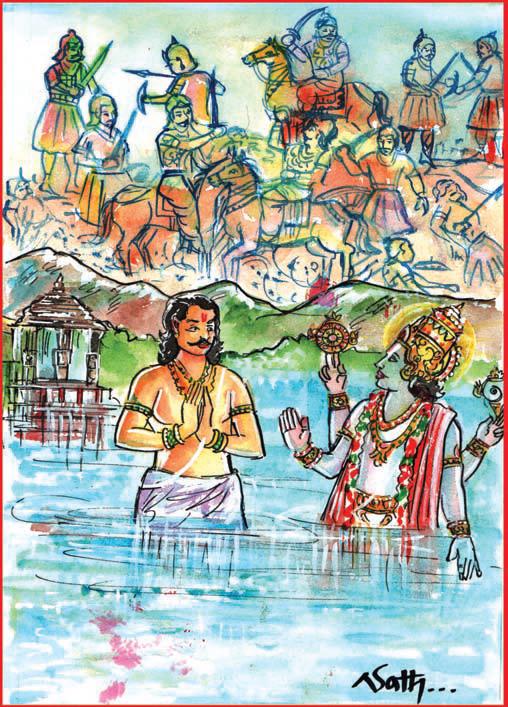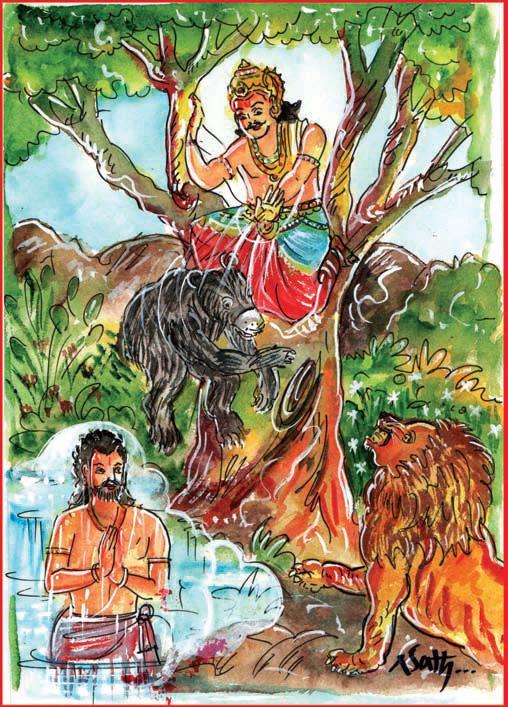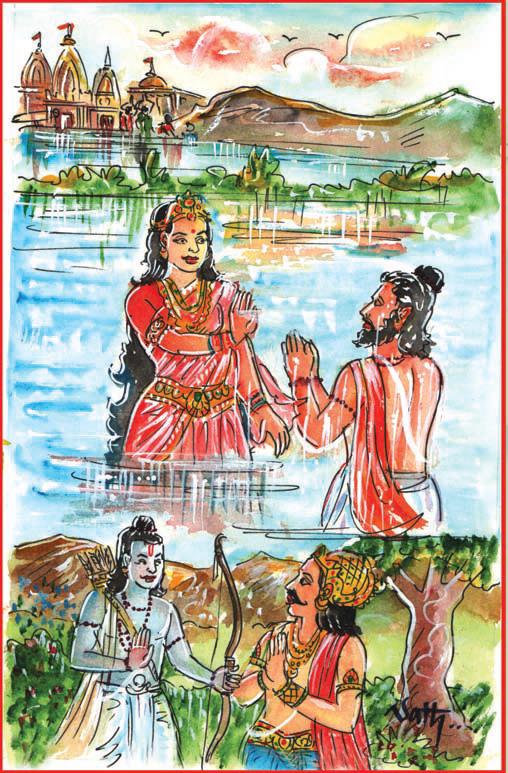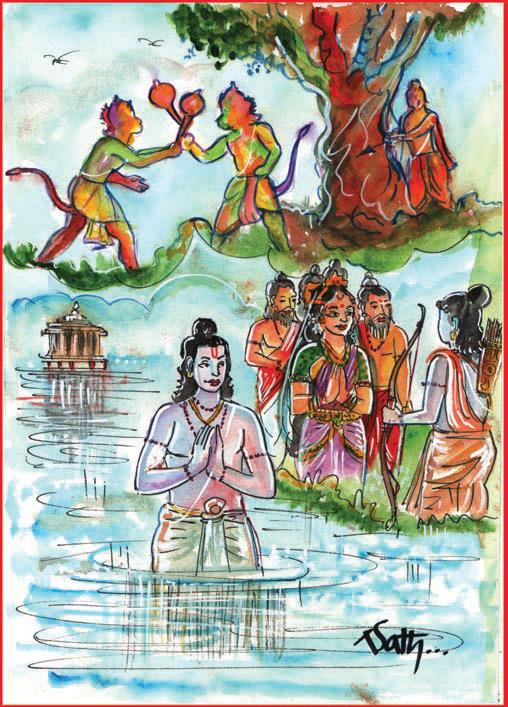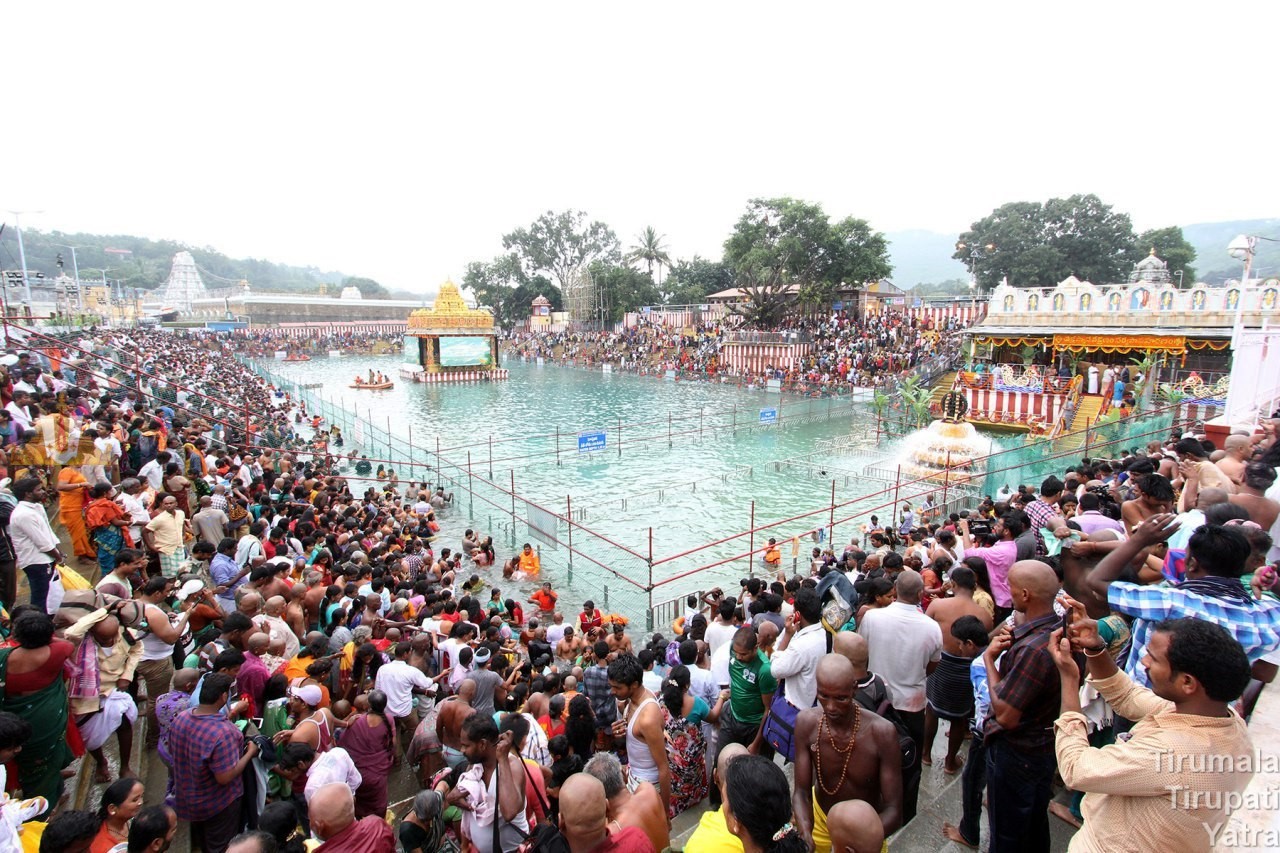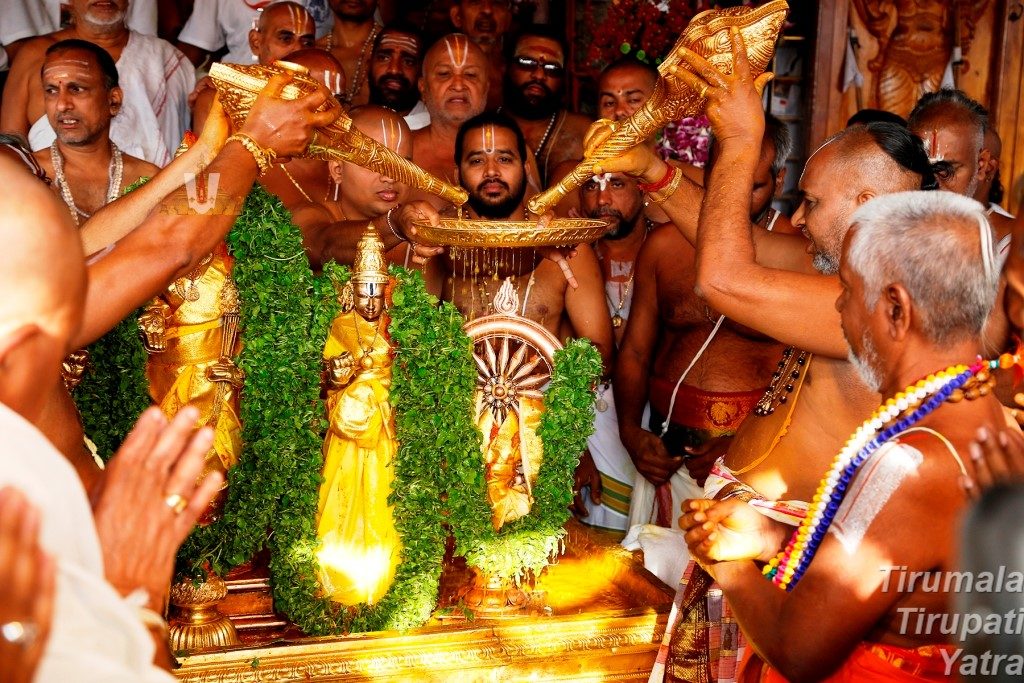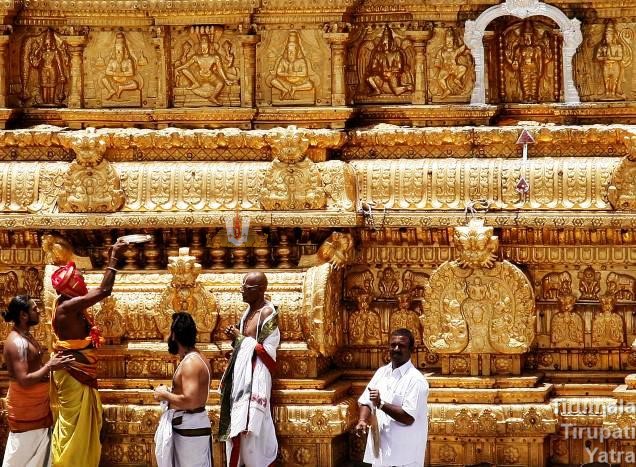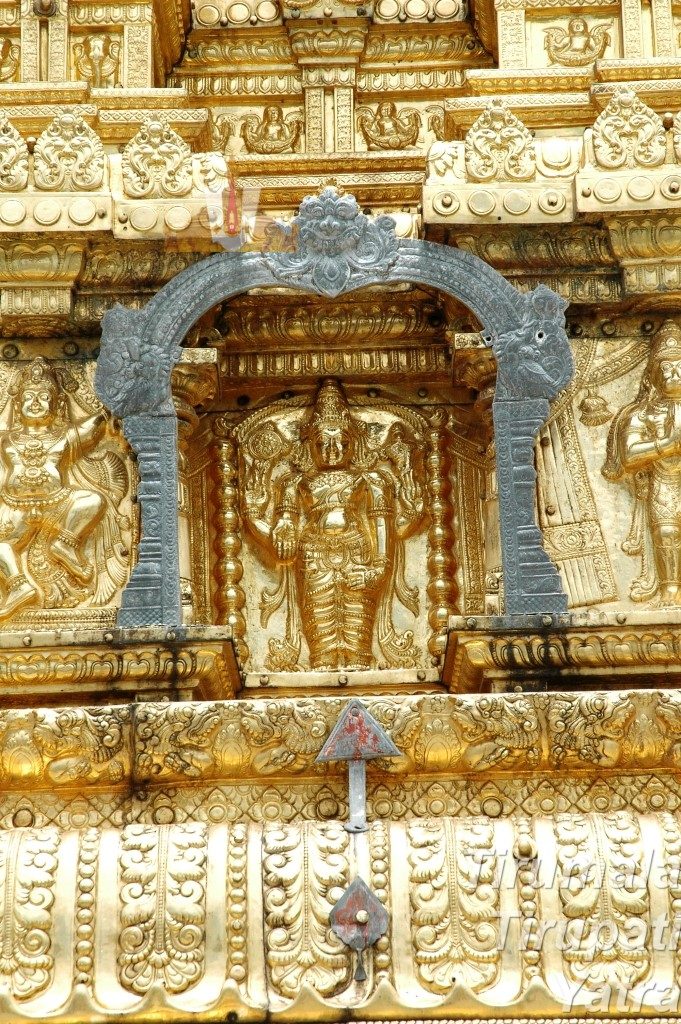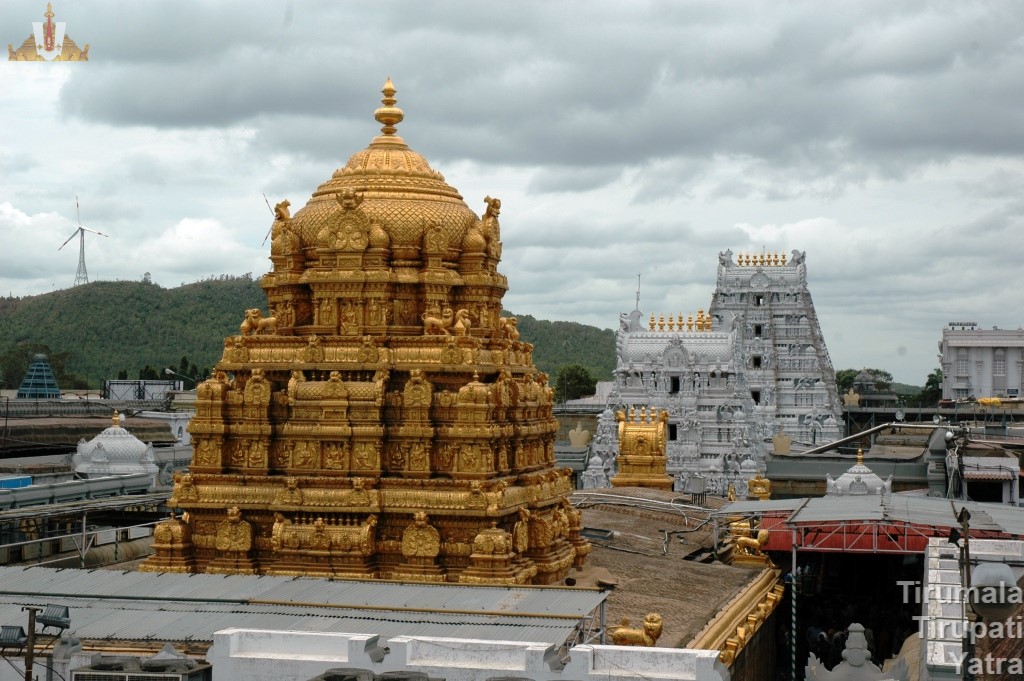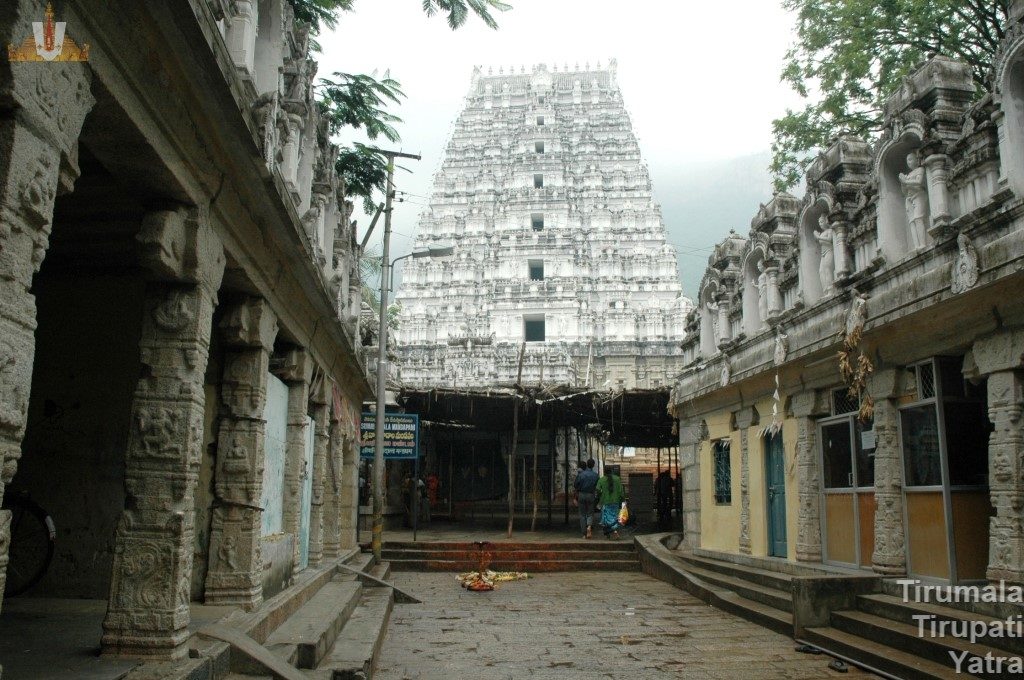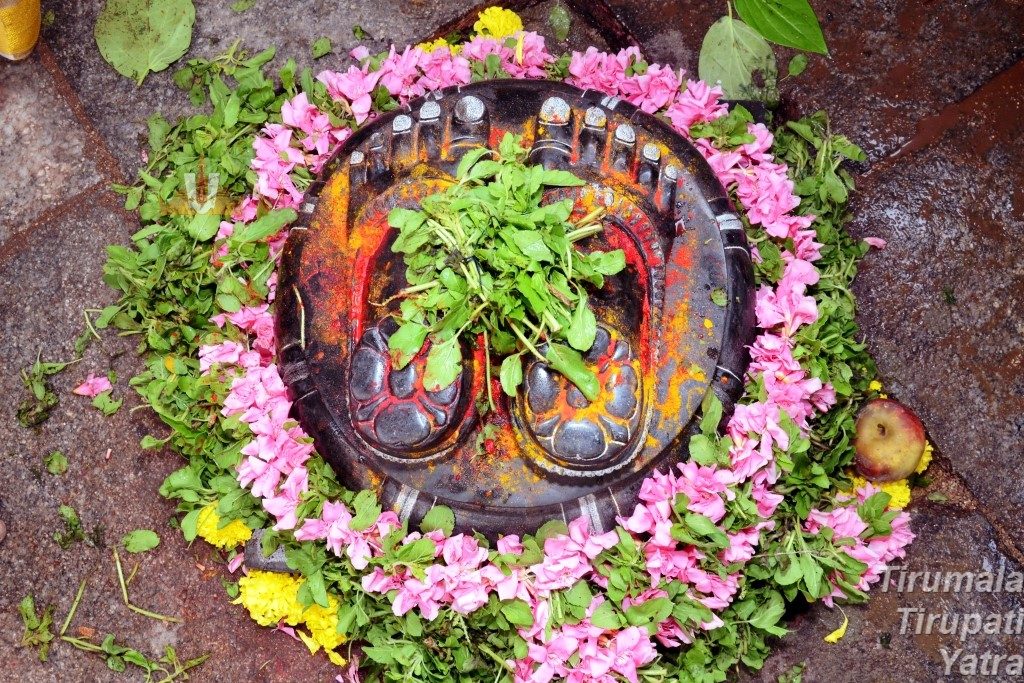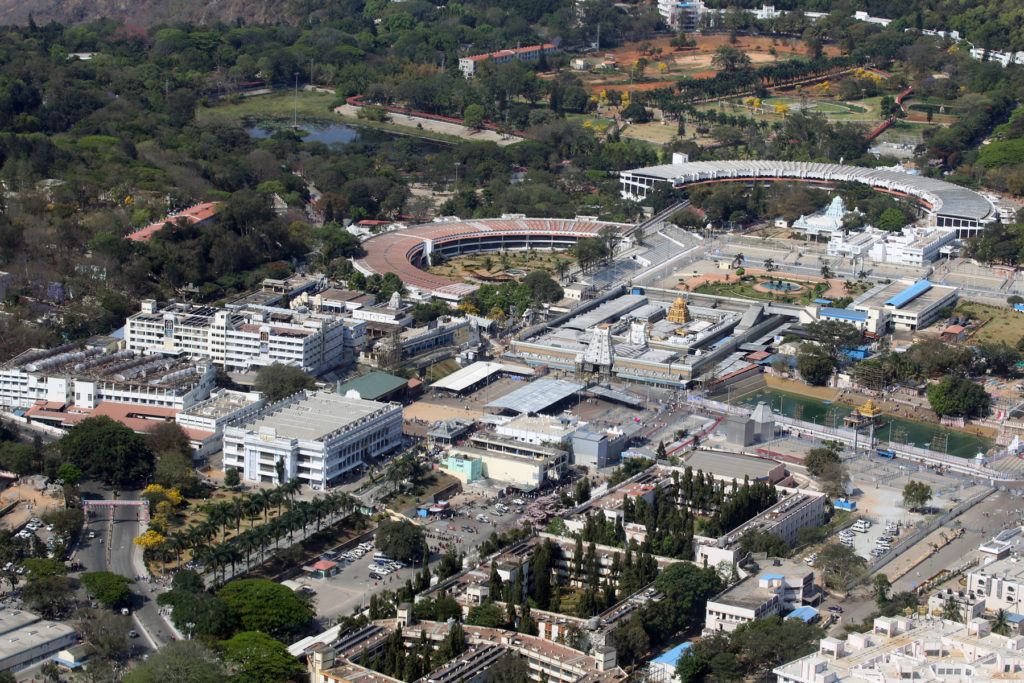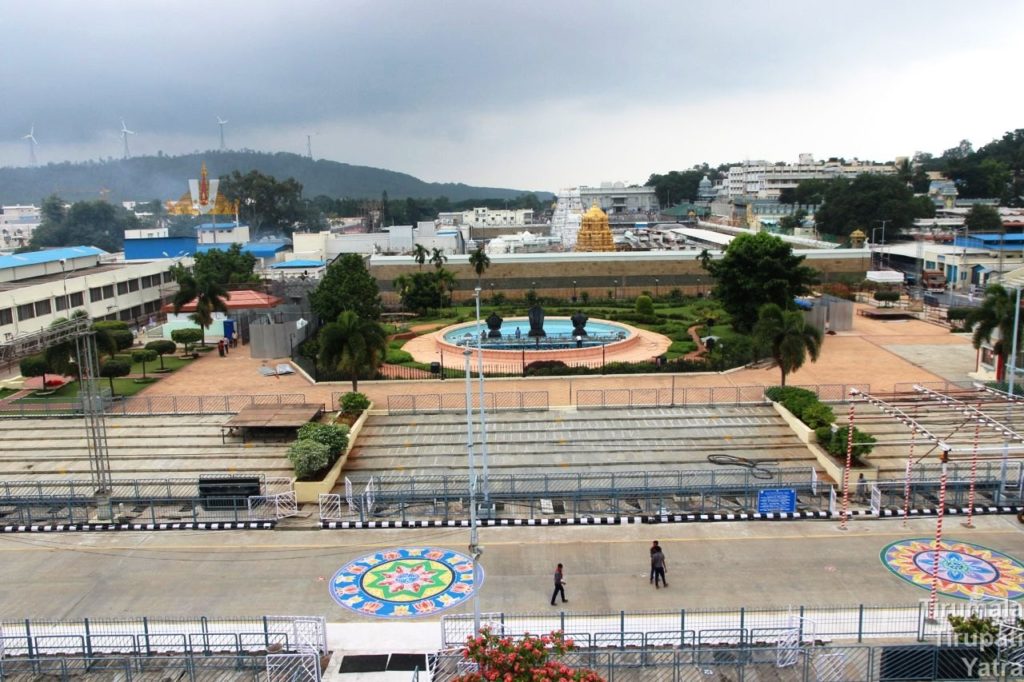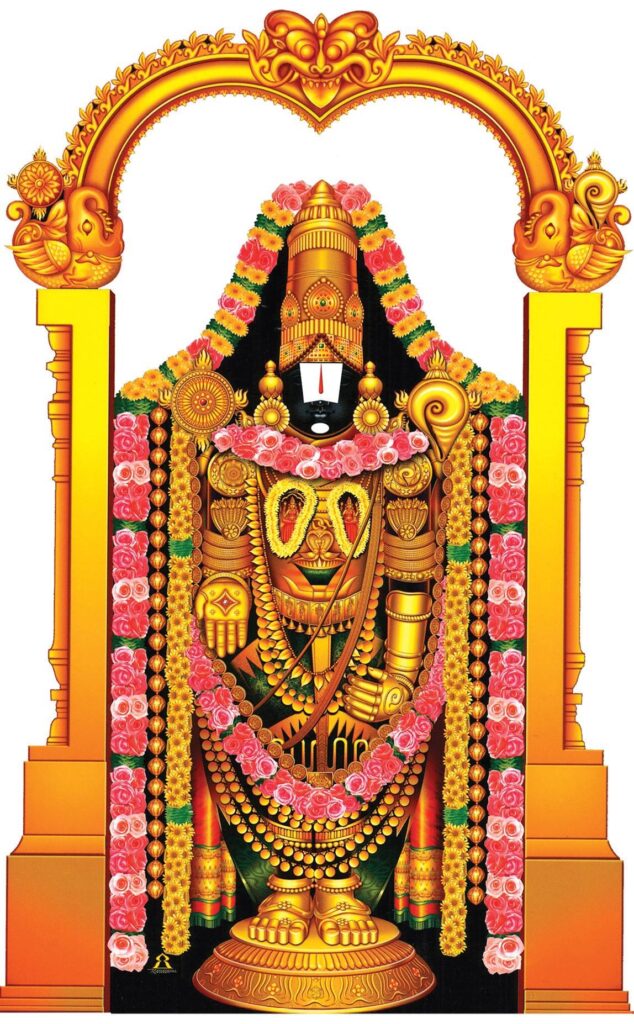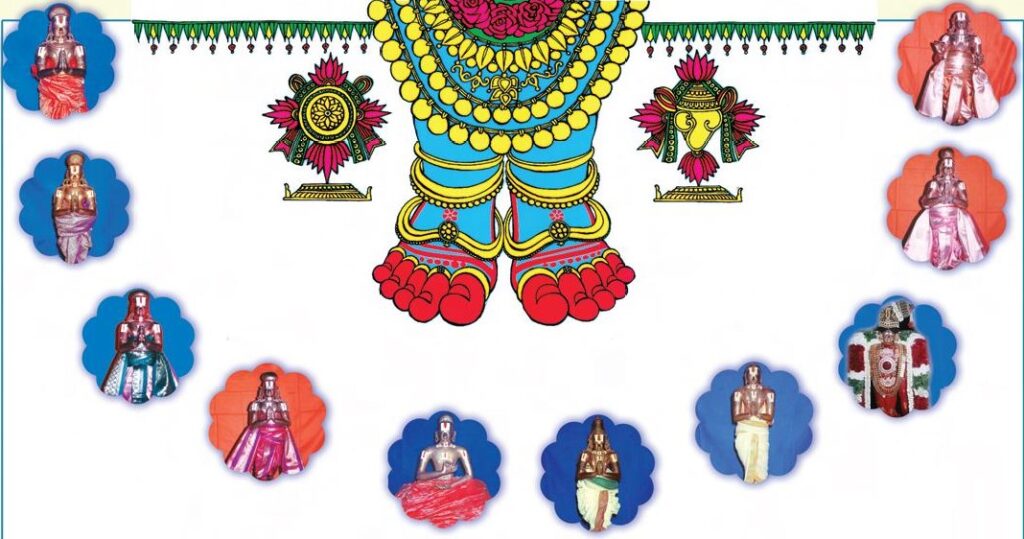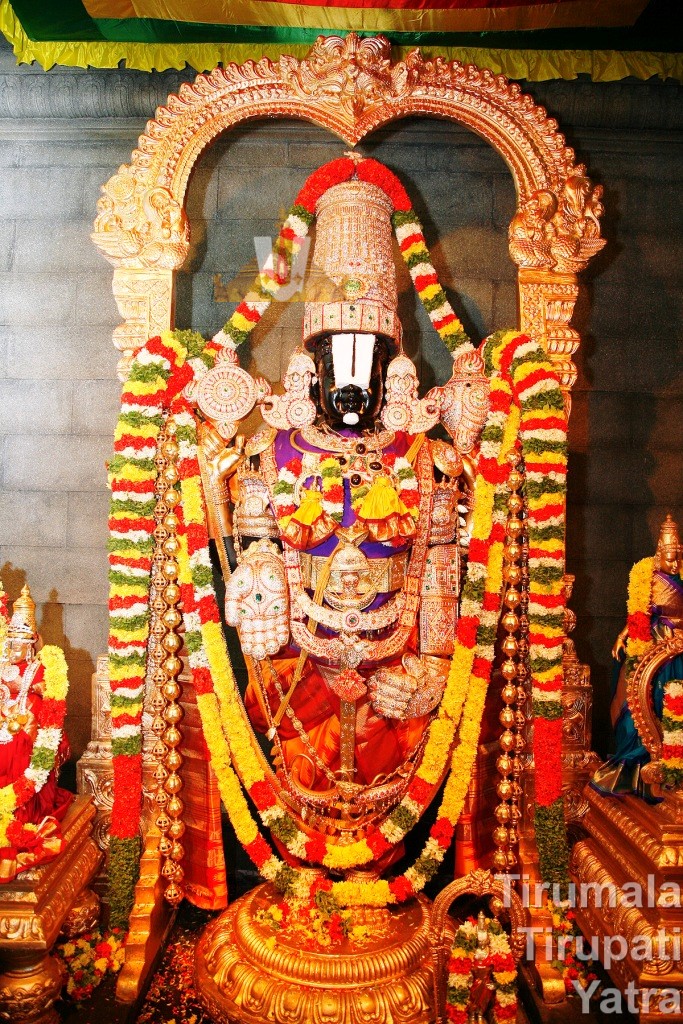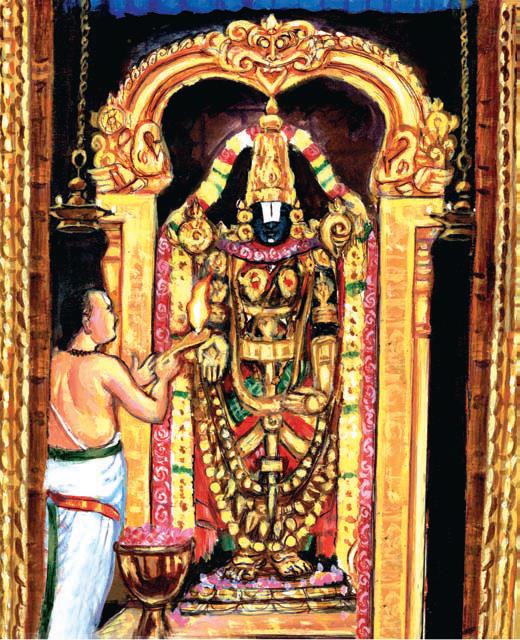Tirumala Hills
Some temples are situated on the banks of rivers. Some can be seen in the forests. Some others are on the mountain tops and others are in caves. The temple of Sri Venkateswara is in a mountainous forest area.
Both the Hill and the river have become sacred on account of Swami’s presence. Swami said to Siva, “Anantoham Mahadeva Sthasyami Giri Rupadhrut Mahadeva! “Mahadeva”! I am in the form of a Hill though I am infinite and eulogized greatly about the Hill.
Reach the Hill that touches the top of the sky and then worship God. Climbing the tower of Venkatagiri, take shelter at the Feet of Bhagawan standing on the cliff, and subsit always at the feet of Bhagawan.
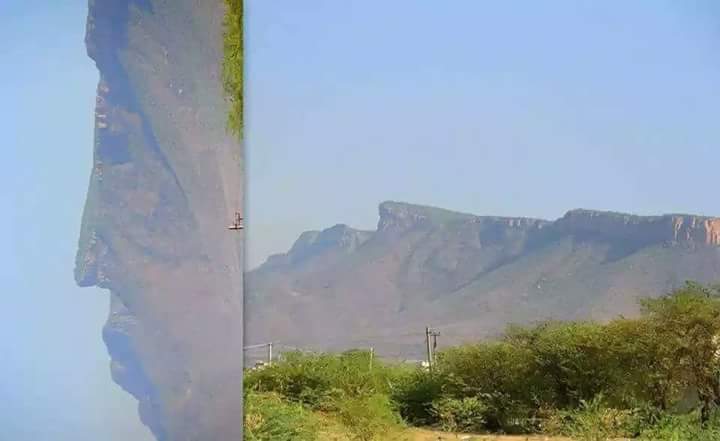
Annamcharya Keerthanas
Annamacharya sang many keertans on the Glory of the mountain mixing them with the feelings of Alwars and the legendary matters.
Of all the keertans the most famous keertan is –
“Adivo Alladivo Hari vasamu”.
The second one is
“Kattedura vaikunthamu kanachayina konda
Tettelaya Mahimale Tirumala konda”.
Nature in Tirumala was beautiful during the time of Annamayya. There must have been good weather, not causing any tiredness to the pilgrims.
That’s why he said,”
“Toranamule trovella
moorata baralumunchina lathala
Vinjamaralunu visanakarralunu
gonje godugeve kondella”.
“Festoons all along the way with the creepers in lengthy way vinjamaras and hand fans Full of umbrellas is this hill.”
The peacocks, the groups of kokilalu (the nightingale), different races of birds, and the trees that offered aspiring fruits were easily available for the pilgrims in those days.
In the same way, there were monasteries and towers as the resting places for the pilgrims.
- Now we say that Tirumala is a garland of Seven Hills, but in Krutayuga it was called ‘Vrushabhadri’.
- In Tretayuga it was called Anjanadri.
- In Dwapara it was called Seshachalam.
- According to another version, it was called Anjanachalam in Krutayuga and Venkatachalam in Tretayuga.
That’s why Annamayya vividly described the area of this Hill.
‘Ade chudu Venkatadri Nalagu yugamulandu
Velugondi prabha miraganu?
“Look at Tiruvenkatadri shining forth in four
yugas.”
Tirumala Hill Names (Seven Hills)
There is a reference about the Seven Hills in Suprabhatam and Sreenivasa Gadyam. Sri Parvatam, Seshasailam, Garudachalam, Venkatadri, Narayanadri, and Vrushadri are the Seven Hills.
In addition to these, some other Hills like
- Chintamani,
- Gnanadri,
- Teerthadri,
- Pushkaradri,
- Kanakadri,
- Simhachalam,
- Anjanadri,
- Varahadri,
- Neeladri,
- Sreenivasagiri,
- Anandadri, and
- Sumeru sikharam were mentioned in legends.
Kannada Haridasa mentioned the Hills also as Sugandha parvata vasa, Saptagiri vasa, Kondalagiriya vasa along with these names.
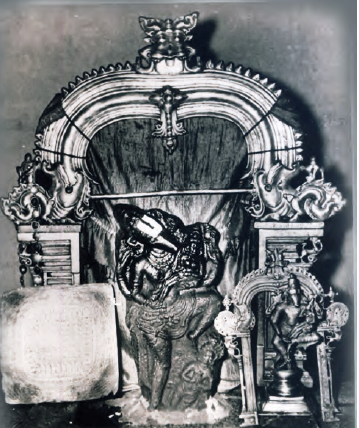
Varaha Kshetra
It is quite natural that the people go up the Hills when any Natural Calamity takes place. Swami is there on the Hill inviting the devotees who are deeply immersed in the ocean of samsara and getting disappointed, whatever it may be, it is worthy to note that Tamilians call swami “Tiru Vengada mudaiyan”. This Hill is called Varaha Kshetra because of the story of Varaha Swami. But over time the name ‘Venkatadri’ is fully established.
Giri Sikhara Darshanam
In some of the temples a visit to the temple – tower is important. It is called “Giri Sikhara Darshanam”. Vijayadasa, Kannada Vaggeyakara sang two lengthy keertans on ‘Giri Sikhara Darshan’.
They are
- ‘Giriya Sikharavakande’
- ‘Giriya Sikharavanodi”.
As soon as the pilgrims reach Tirupati, they look at the temple – tower, bow their heads, fold their hands, and prostrate before the tower with all their devotion. They suminate this experience repeatedly and go forward. This scene is beautifully described by Vijayadasa.
He said that those who don’t have Bhakti sadhans are denied the opportunity of visiting the Hill, one step in Tirumala is enough to uplift his entire race. Uragadri Vittaladasa said that until and unless one has punya pakam (results of virtues) one cannot get Giri Darshan. Vedanta Desika in his “Daya satakam” sang about the Hill.
“Prapadye tam Girim prayah
Sreenivasanukampaya
Ikshu sarasravantyava
yanmurtya sarkarayitam”.
Tiruvenkatachala parvatam
That the mercy of Sreenivasa flowed like the flood of sugarcane juice and got solidified and transformed into Sugar Hill called ‘Tiruvenkatachala parvatam’. Paramasiva taught Sanakada Maharshis that the visit of Venkatachala would not be available without the devotional practice in the innumerable births of aeons past. This legendary matter is as follows in the words of Vijayadasa.
“Anantajanumake sadhanakudadallade
EeNaga Darigu Darusana Vagadu”.
Giridarshanam and Giri Pradakshinam are important for Saivites also.
